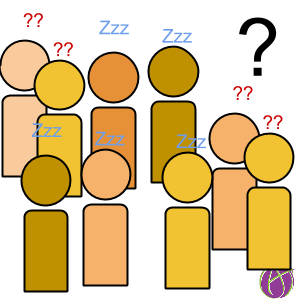As a high school math teacher I have a wide variety of abilities in my class. When teaching a lesson inevitably the material is going to be too easy for some of my students and too hard for others. If I start a lesson with the basics to introduce the concept I am boring my higher end students. As I move onto more difficult examples my lower end students start to become overwhelmed. Towards the end of the lesson where I am introducing new ideas that my higher end students need to pay attention to, they have zoned out thinking they already know how to do this earlier in the lesson. The low end and middle end students are information overload and they are not feeling confident about being able to do the assignment.
In the end, I taught nobody.
Gamification
Games teach us that you give the player a challenge that is just above their ability level but within their reach. Starting a game on level 20 is too hard and the player gives up. Games also do not front load the learning. Players start on level 1 and practice a single skill at a basic level. As the player levels up additional information is revealed to the player as is additional skills the player needs. Eventually the skills are combined together for the more challenging levels.
Technology
Delivering information and practice at the students ability level and incrementing in the skills needed is a challenging to impossible task. One teacher with 30+ students (or for high school up to 200 students across all of the classes) there is only so much that can be done.
Using technology students can access information at their level. Higher end students can skip the basic information and practice concepts that challenge them. Lower end students can practice the basics before moving onto more challenging concepts. A well organized website that breaks down the tasks into challenge levels and provides micro lessons or examples helps students get started. Taking advantage of playsheets allows students to practice at their level in a gamified environment.
When I gave up direct instructing the entire class I was able to better address the needs of my students. When my higher end students could skip the basic practice and work on really challenging critical thinking problems they were more motivated. I was freed up to have discussions with them to help them reason out how to approach these challenges. I am able to pull students into small group discussions when there is a concept some of them are struggling with. I could demonstrate the concept if necessary or we could together reason out the problem to help them to better understand the concepts.








